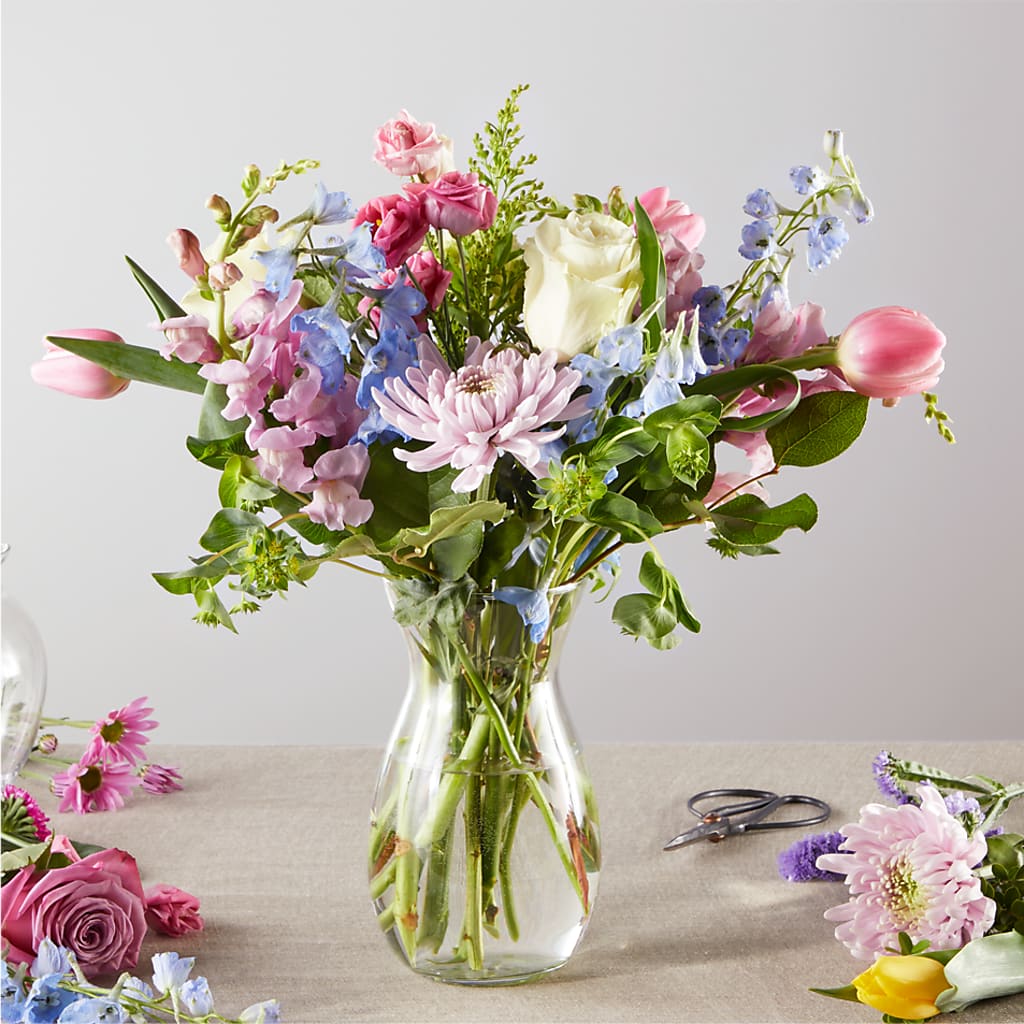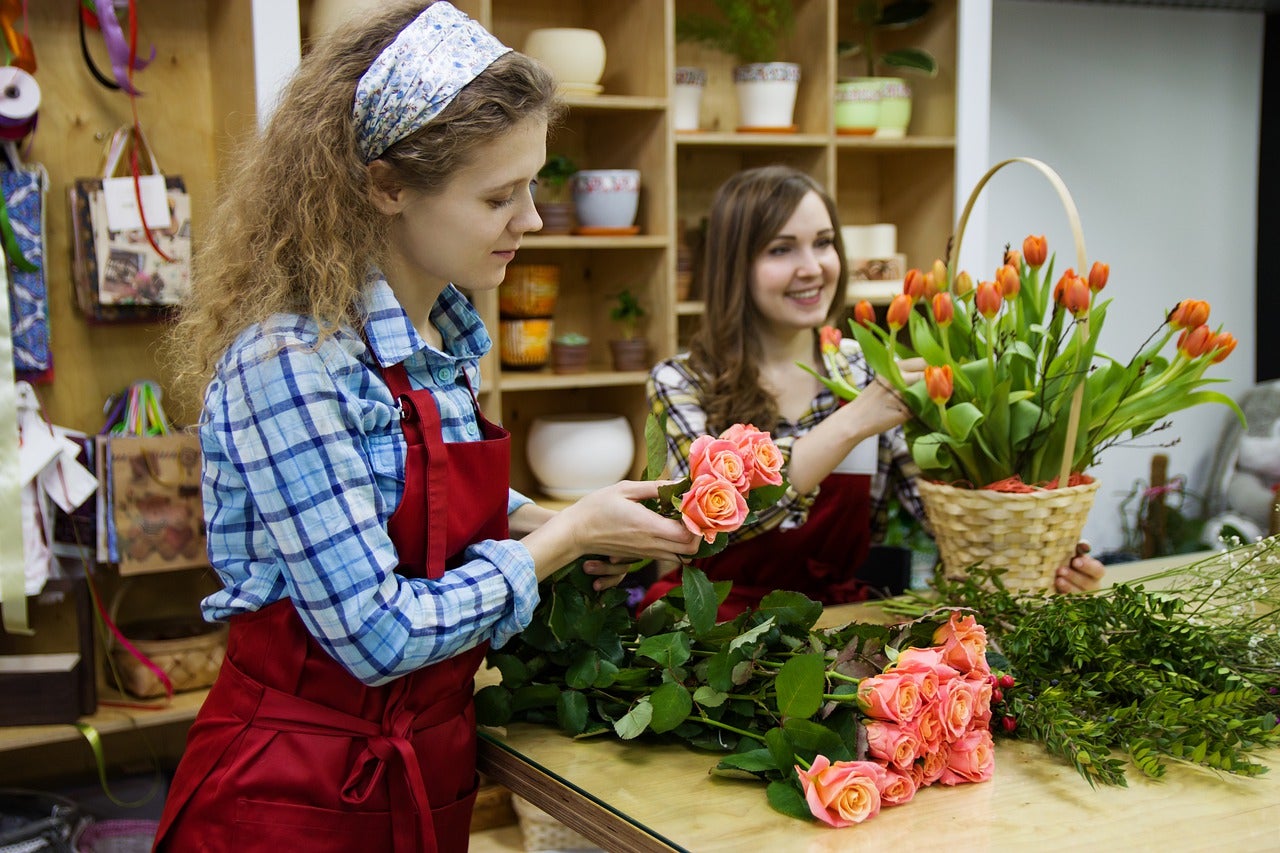Discover the Art of Floral Layout: Tips From Expert Florists
Floral design is not merely a visual venture; it is a nuanced art form grounded in principles such as equilibrium, percentage, and comparison. Expert floral designers supply very useful understandings into selecting the proper blossoms tailored to certain occasions, ensuring that each plan resonates with its designated message.
Understanding Floral Layout Principles
Frequently forgotten by newbie flower shops, comprehending the basic principles of flower layout is necessary for developing visually appealing arrangements (florist lockhart). These concepts function as the structure upon which successful floral compositions are constructed, making certain harmony and equilibrium in each creation
Balance refers to the distribution of visual weight within a plan, which can be in proportion or asymmetrical. Contrast, attained via differing shades, forms, and textures, includes passion and depth to the layout.

Rhythm overviews the audience's eye via the arrangement, commonly completed by duplicating shapes or colors. Finally, unity ensures that all parts of the style interact cohesively, developing a feeling of completeness. By grasping these principles, floral designers can raise their work, transforming simple arrangements into stunning aesthetic statements.
Eventually, a strong understanding of these flower design principles not just enhances creative thinking but likewise promotes a much deeper appreciation for the creativity entailed in floral plans (florist lockhart). Through method and application, beginner flower designers can create their abilities and produce unforgettable designs
Selecting the Right Flowers
Picking the proper blossoms is an essential action in the floral design process, directly impacting the overall aesthetic and effectiveness of the plan. To begin, think about the event; various occasions ask for distinctive blossom kinds. Enchanting setups might profit from roses, while cheerful celebrations may match sunflowers or gerbera sissies.
Use a color wheel to identify complementary or similar shade plans that can create a cohesive appearance. Furthermore, think about the period; seasonal blossoms not only make certain quality but additionally commonly come at a lower price, making them a functional option.
One more crucial aspect is the intended durability of the arrangement. Some flowers, such as chrysanthemums and carnations, have longer flower holder lives, while others, like peonies, might wilt quicker. Finally, examine the size and shape of the flowers in connection with your design goals. Bigger blossoms can act as focal factors, while smaller flowers can fill up in voids and include texture. By thoughtfully choosing blossoms, you can develop setups that resonate with their intended function and target market.
Techniques for Plan

One more effective strategy is the "line design," which highlights navigate to this website the all-natural lines and forms of the flowers. By utilizing long-stemmed flowers, developers can produce a feeling of activity and circulation in the plan, drawing the eye along the lines created by the stems. Additionally, integrating differing heights in the arrangement adds depth and rate of interest, allowing the audience to discover the item from various angles.
This method can evoke details feelings and established the state of mind of the plan. Don't fail to remember the importance of unfavorable area; leaving gaps within the arrangement permits for breathing space, enhancing the total visual and stopping overcrowding.

Seasonal Floral Inspirations
Incorporating seasonal elements into flower styles can exceptionally improve their charm and relevance. By lining up floral arrangements with the changing seasons, flower designers can evoke particular state of minds, styles, and colors that reverberate with customers and the environment. Each season provides an one-of-a-kind scheme of blooms and foliage that permits imagination and inspiration.
Fall's abundant tones can be recorded with dahlias, chrysanthemums, and ornamental turfs, creating warm, welcoming setups that mirror the harvest. Wintertime uses a tranquil aesthetic with evergreens, amaryllis, and seasonal berries, ideal for evoking a feeling of tranquility and festivity.
Caring for Your Arrangements
Caring for flower arrangements is vital to maintain their elegance and durability. Proper treatment makes sure that your blossoms stay vivid and fresh, improving the visual allure of your space. Beginning by putting your arrangement in a cool place, away from straight sunshine and drafts, as severe temperature levels can trigger wilting and staining.
Frequently examine the water degree in the flower holder, ensuring it is adequate to cover the stems adequately. Replace the water every couple of days to stop microbial development, which can reduce the life expectancy of your arrangement. When changing the water, trim the stems at an angle to help with far better water absorption. Get rid of any wilted or browning leaves and petals without delay to stop decay from dispersing.
Furthermore, take into consideration the kind of blossoms in your arrangement; some may call for details care. Stay clear of putting your arrangements near ripening fruit, as ethylene gas can accelerate wilting.

Conclusion
In conclusion, understanding the art of floral design entails a detailed understanding of foundational principles, cautious choice of flowers, and the application of efficient setup techniques. Seasonal my company ideas additionally enhance creative thinking, top article while correct treatment ensures that flower screens maintain their elegance and long life. By incorporating these aspects, individuals can create impactful arrangements that share emotion and serve their desired purpose, ultimately improving the experience of both the creator and the recipient.